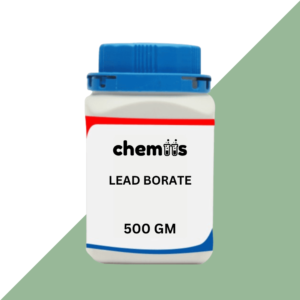Zinc Borate is an inorganic compound with the chemical formula 2ZnO·3B₂O₃·3.5H₂O, primarily known for its excellent flame-retardant properties. It is a white, free-flowing powder that is insoluble in water but stable under standard storage conditions. Zinc Borate is widely used as a flame retardant, smoke suppressant, and antifungal agent in various industrial applications.
This environmentally friendly additive plays a significant role in enhancing the performance and safety of plastics, coatings, and other materials. It works synergistically with other flame retardants to improve thermal stability and fire resistance.
Applications of Zinc Borate
1. Flame Retardant and Smoke Suppressant
- Plastics and Polymers:
Zinc Borate is widely used in polyvinyl chloride (PVC), polyolefins, nylons, and other thermoplastics as a flame retardant. It enhances the fire resistance of materials by releasing water molecules and forming a protective layer during decomposition. - Cable Coatings:
Improves flame resistance and reduces smoke generation in electrical cables. - Rubber and Elastomers:
Used in rubber compounds to enhance fire retardancy and thermal stability.
2. Coatings and Paints
- Fire-Resistant Coatings:
Added to intumescent paints and coatings to improve fire retardancy and protect structural materials. - Antifungal Additive:
Provides protection against fungal growth in marine paints and coatings for humid environments.
3. Wood and Cellulose Products
- Preservative:
Acts as a fungicide and insecticide for wood products, protecting against decay and pests. - Fire Retardant Treatment:
Used in composite wood products to enhance fire resistance.
4. Ceramics and Glass
- Fluxing Agent:
Improves thermal and chemical stability in ceramic glazes and glass formulations.
5. Synergistic Flame Retardant
- Works in conjunction with antimony trioxide, aluminum hydroxide, and magnesium hydroxide to achieve enhanced flame retardancy in polymers and coatings.
6. Electrical and Electronics
- Printed Circuit Boards (PCBs):
Enhances fire resistance in PCB laminates. - Encapsulation Materials:
Used in electronic components for thermal stability and fire protection.
Safety and Handling Guidelines
1. Hazards and Precautions
- Health Risks:
Prolonged inhalation of dust may cause respiratory irritation. - Skin and Eye Contact:
Can cause mild irritation upon direct contact. - Ingestion:
Low toxicity, but ingestion in large quantities may cause discomfort. - Environmental Impact:
Non-toxic to the environment, but avoid large-scale release into water bodies.
2. Personal Protective Equipment (PPE)
- Respiratory Protection:
Use a dust mask or respirator when handling fine powders. - Eye Protection:
Wear safety goggles to prevent eye irritation. - Skin Protection:
Use gloves and protective clothing to minimize skin exposure.
3. Storage Instructions
- Store in a cool, dry, and well-ventilated area.
- Keep the container tightly closed to prevent moisture absorption.
- Avoid exposure to high temperatures and direct sunlight.
4. Spill and Cleanup
- Sweep or vacuum spills and collect in a labeled container for disposal.
- Avoid creating airborne dust.
- Dispose of waste according to local environmental regulations.
5. First Aid Measures
- Inhalation:
Move to fresh air; consult a physician if respiratory discomfort persists. - Skin Contact:
Wash with soap and water; apply a soothing cream if irritation occurs. - Eye Contact:
Flush eyes with water for 15 minutes and seek medical attention if irritation continues. - Ingestion:
Rinse mouth with water; seek medical advice if necessary.







Manju Devi (verified owner) –
Very dependable delivery.
Shweta Dubey (verified owner) –
Delivered safely and quickly.
Jyoti Sharma (verified owner) –
Very professional service.
Shruti Bhandari (verified owner) –
Clear product details.
Manju Devi (verified owner) –
Very fast delivery.
Arjun Reddy (verified owner) –
On-time and well-packed.
Zoya Merchant (verified owner) –
Repeat customer, always happy.
Shweta Dubey (verified owner) –
Product matches the description.
Kiran Kumar (verified owner) –
Reliable chemical supplier.
Aarti Shukla (verified owner) –
Reliable supplier.